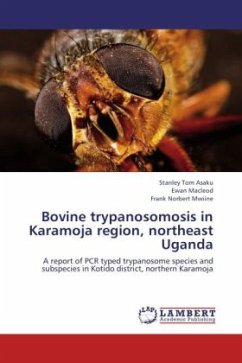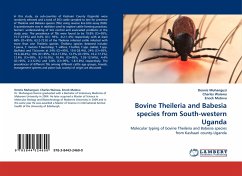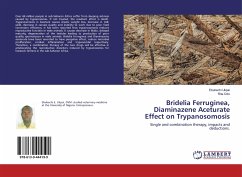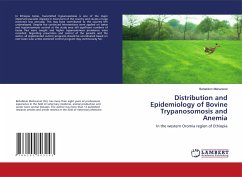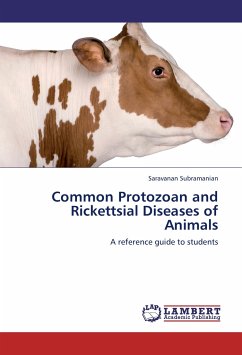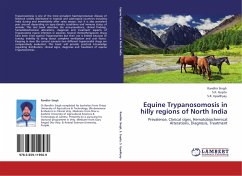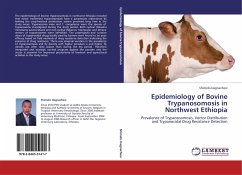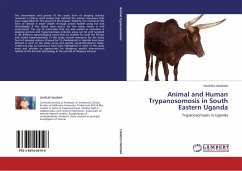
Animal and Human Trypanosomosis in South Eastern Uganda
Trypanosomiasis in Uganda
Versandkostenfrei!
Versandfertig in 6-10 Tagen
52,99 €
inkl. MwSt.

PAYBACK Punkte
26 °P sammeln!
The transmission and spread of the acute form of sleeping sickness remained a mistery untill studies that defined the animal reserviours that were responsible for the spread of this disease. Similarly, the control of this form of disease is made simpler through animal models using live bait technologies if the blood meal source for the tsetse vector is well understood. The use of insectcides that are also usefull as acaricides in sleeping sickness and trypanosomiasis endemic areas can be well targeted in the different agroecological zones that are endimic for both the human and animal trypanos...
The transmission and spread of the acute form of sleeping sickness remained a mistery untill studies that defined the animal reserviours that were responsible for the spread of this disease. Similarly, the control of this form of disease is made simpler through animal models using live bait technologies if the blood meal source for the tsetse vector is well understood. The use of insectcides that are also usefull as acaricides in sleeping sickness and trypanosomiasis endemic areas can be well targeted in the different agroecological zones that are endimic for both the human and animal trypanosomiasis. In this study, animal reservours for the acute form of sleeping sickness (Caused by T.b.rhodesiense) in Uganda have been defined in each of the study zones and specific recommendations made. Cattle and pigs as reserviours have been highlighted in some of the study areas and provide an opportunity for designing specific interventions related to the live bait technology in the controlof sleeping sickness.



